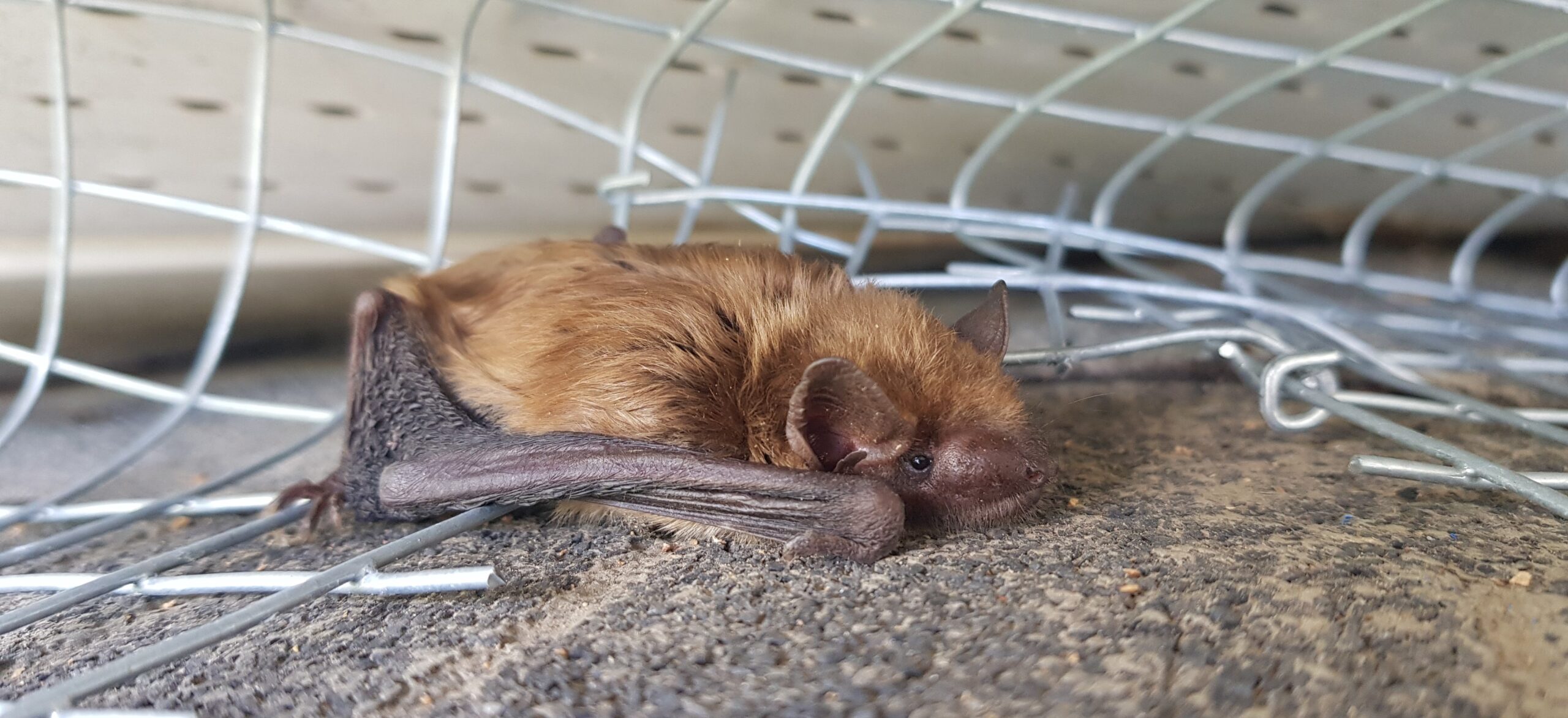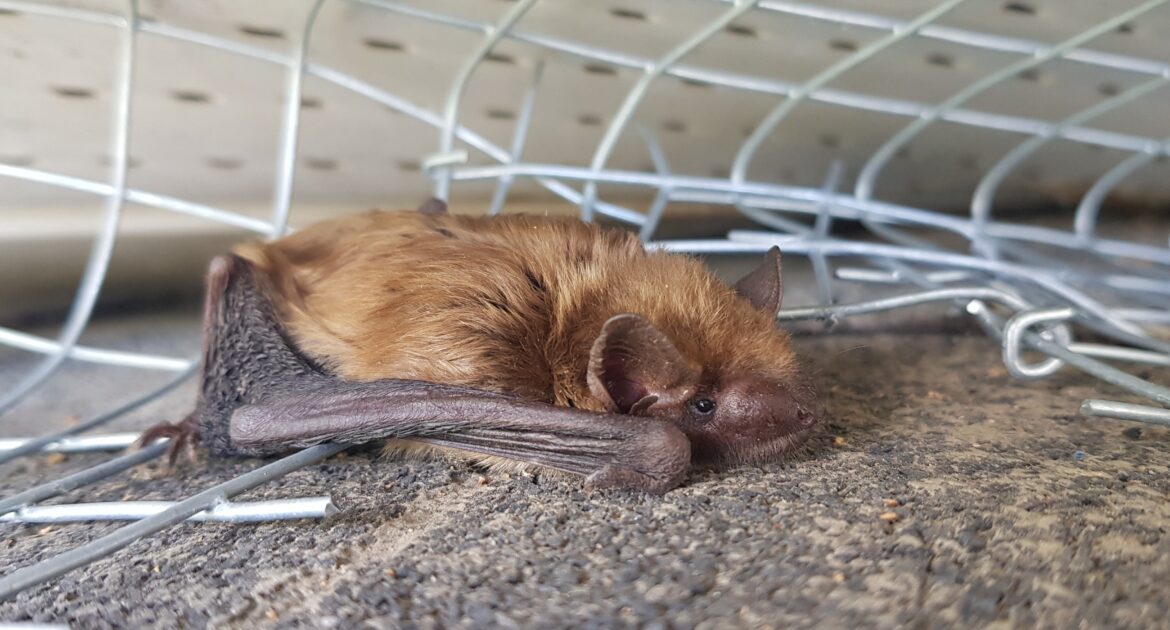Bats have long been surrounded by mystery, giving rise to all sorts of legends and misconceptions. But one question people keep asking is, “Are bats blind?” This phrase has been tossed around for years, leading many to believe it’s true. However, as fascinating as these animals are, this is just another one of the many myths about bats. We’re here to set the record straight.
At Skedaddle Humane Wildlife Control in Milwaukee, we’ve learned that understanding the truth about bats is the first step to appreciating these remarkable animals. Myths about bats often overshadow the facts, but we’ll help you uncover the real story, especially when it comes to their vision. By the end, you’ll know the facts on bat vision and be equipped with tools to understand these creatures better.
Where Did the Myth Start?
The idea that bats are blind likely originated from their nocturnal nature and their remarkable use of echolocation. If they fly and hunt seamlessly in the dark, many assumed they must not rely on vision at all. But that couldn’t be further from the truth!
The truth is, most bats can see quite well. Different species have varying abilities, with some even capable of seeing ultraviolet light, which humans cannot detect. These extraordinary creatures have a unique way of combining echolocation and eyesight, making them highly skilled hunters both day and night.
Cool Facts on Bat Vision
Want to know more about how bats “see” the world? Here are some amazing facts on bat vision that might surprise you:
- They See in the Dark: They have low-light vision that helps them see well at dusk and dawn, times when they’re often most active.
- Ultraviolet Superpower: Certain bats, like fruit bats, can see UV light, giving them an edge when locating food.
- Eyes and Echolocation Work Together: These animals don’t rely solely on echolocation. Instead, they use it alongside their eyesight to move and hunt effectively.
Why Do Myths About Bats Exist?
Bats have often been misunderstood because of their unusual habits and appearance. Myths, such as “bats get stuck in your hair” or “bats all drink blood” likely developed because people found their lifestyles peculiar or spooky.
For example, bats are nocturnal and live in dark spaces, which sets them apart from other animals people encounter. Couple that with their ability to fly silently in the night, and they become perfect candidates for folklore and superstitions.
But did you know bats play an important role in our environment? Here’s why they matter so much:
- Natural Pest Control: Many of them eat insects, like mosquitoes, reducing the need for harmful pesticides.
- Pollinators: Certain species help pollinate plants and disperse seeds, keeping ecosystems healthy.
Signs You May Have Bats in Your Home
While bats are incredible animals, they can create problems if they make their way inside your home. How do you know if you have bats living in your space? Here are some clues to watch for:
- Squeaking Noises: These animals are noisy, especially as they leave or return to their roost. If you listen closely around dusk or dawn, you might hear high-pitched squeaks or rustling sounds. These noises often come from attics, walls, or chimneys where bats gather. The more bats there are, the louder and more frequent these sounds can become.
- Droppings (Guano): Look for small piles of droppings near doors, windows, or attics. Guano often looks like tiny, dark pellets and can sometimes be mistaken for mouse droppings. Unlike other animal waste, bat guano crumbles into a powdery texture when touched, making it a clear sign that bats are nearby. Regular buildup of droppings can stain surfaces and signal a larger bat population.
- Unusual Smells: A strong odor from guano or urine can signal a bat presence. This smell is often described as musty or pungent, especially if the bats have been there for a long time. The more droppings accumulate, the stronger the smell gets, which can quickly spread to other areas of your home. If you notice this odor, it’s often a sign that bats have been roosting for a while.
- Entry Points: Check for small gaps in your roof, eaves, or siding (bats can squeeze through holes as small as a quarter-inch wide). Take a close look around vents, chimneys, and loose shingles since these are common entry points. Even tiny cracks or spaces in attic vents and fascia boards can be enough for a bat to slip inside easily. Sealing these gaps is critical to keeping these animals out.
What We Do at Skedaddle Humane Wildlife Control
When bats find their way into your home, it’s vital to remove them safely and ethically. At Skedaddle Humane Wildlife Control in Milwaukee, we use specialized techniques to ensure both your home and the bats are protected.
One of our key tools is the one-way door. These clever devices allow bats to exit your home but prevent them from getting back inside. Once the bats are gone, we seal all potential entry points to keep them from returning.
This humane approach helps protect these incredible animals while restoring your home to a safe, bat-free space.
How to Keep Bats Out of Your Home
After they have been removed, it’s essential to keep them from coming back. Here are steps you can take to bat-proof your home:
- Check for Small Openings: These animals can enter through gaps as tiny as a quarter-inch. Close up holes near vents, chimneys, and rooflines.
- Install Screens and Covers: Use sturdy mesh or screens to guard attic vents or other potential openings.
- Maintain Your Home: Repair loose shingles or siding, as even small vulnerabilities attract bats.
While these tips are helpful, professional wildlife control experts like us can ensure that your home is fully secure.
Bats and Their Extraordinary Lives
It’s easy to see why these animals have fascinated people for generations. But instead of believing myths, like “bats are blind,” knowing the real facts lets us admire them for what they truly are.
Here are just a few more extraordinary abilities to know about:
- They’re Eco-Warriors: Bats save farmers billions every year by eating crop-destroying insects.
- Long Lifespans: Some of these animals can live for over 30 years!
- Amazing Navigators: Echolocation allows them to fly with precision even in pitch blackness.
The next time you see a bat, you’ll know it’s not a blind animal to fear but a sighted and essential part of our shared environment.
Helping People (and Bats!) in Milwaukee
At Skedaddle Humane Wildlife Control in Milwaukee, we specialize in separating myths from facts while helping homeowners address wildlife challenges. Whether you’re wondering, “Are bats blind?” or dealing with these animals in your attic, we’re here to help.
Our team understands the importance of treating bats humanely and ensuring your home stays protected. With our proven techniques, like one-way doors and expert exclusion methods, you can trust that both you and the wildlife are in good hands.
Dealing with a bat problem? Don’t wait to take action. Contact us today for professional bat removal. Request an estimate today and give your home the care it deserves while respecting the amazing creatures that share our world.




